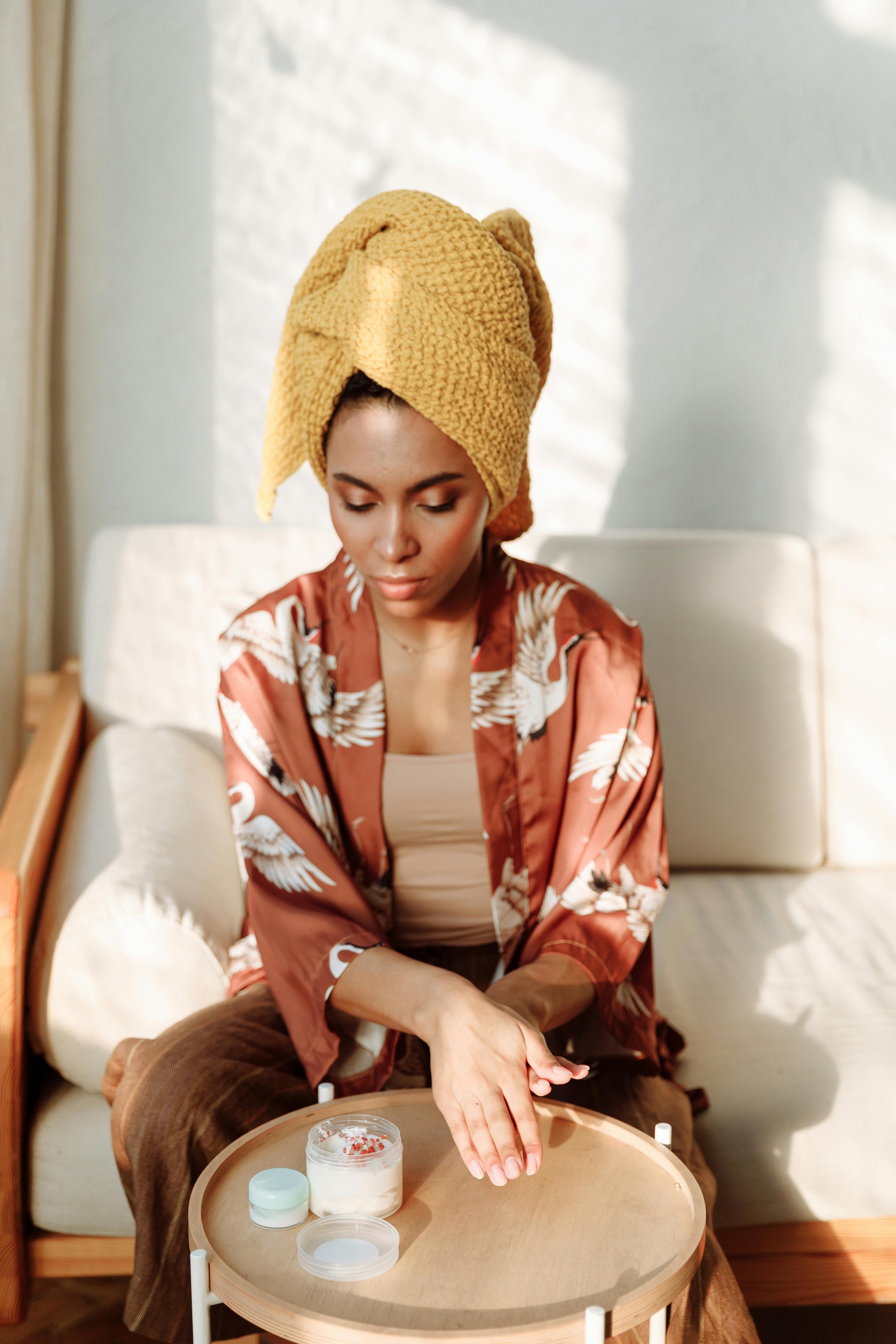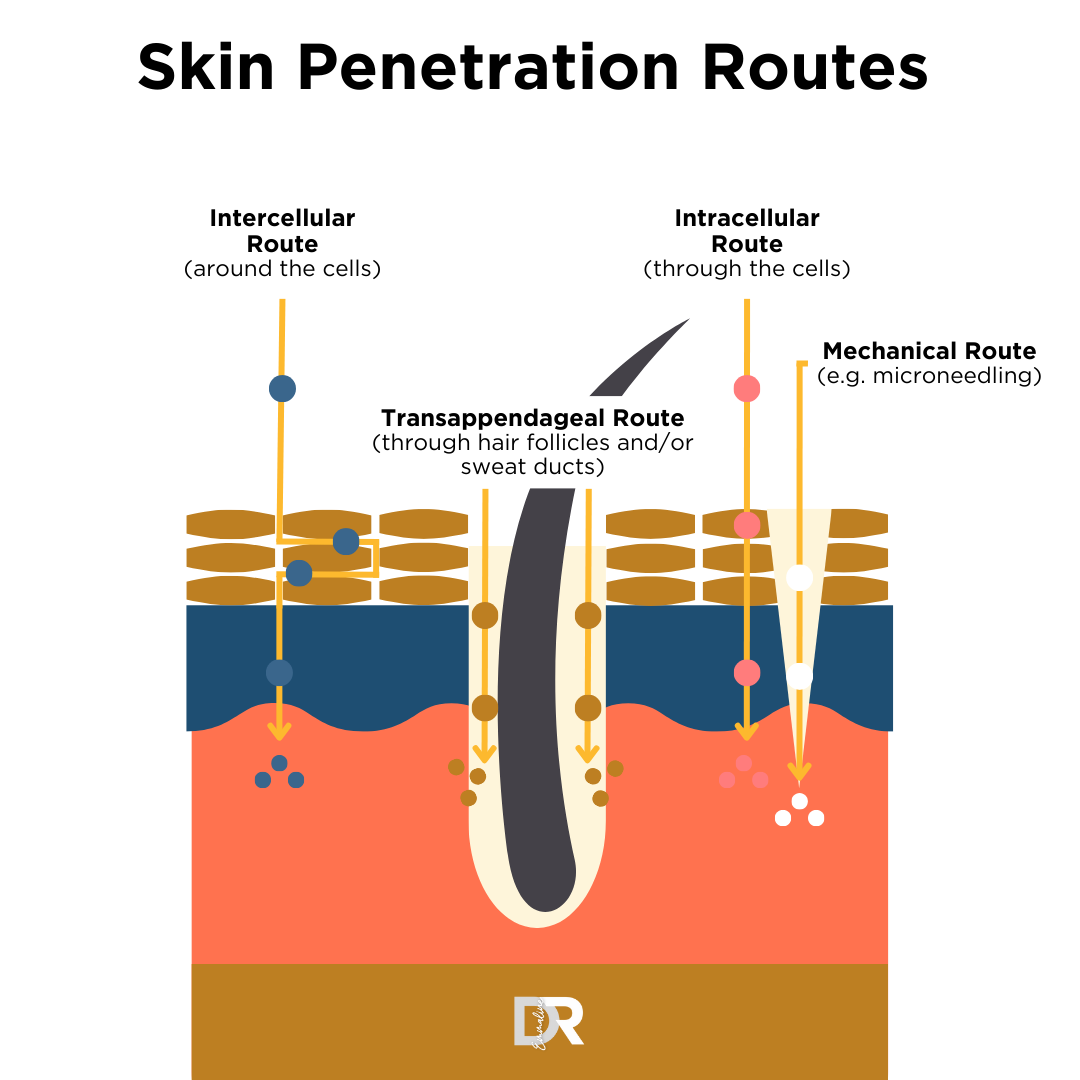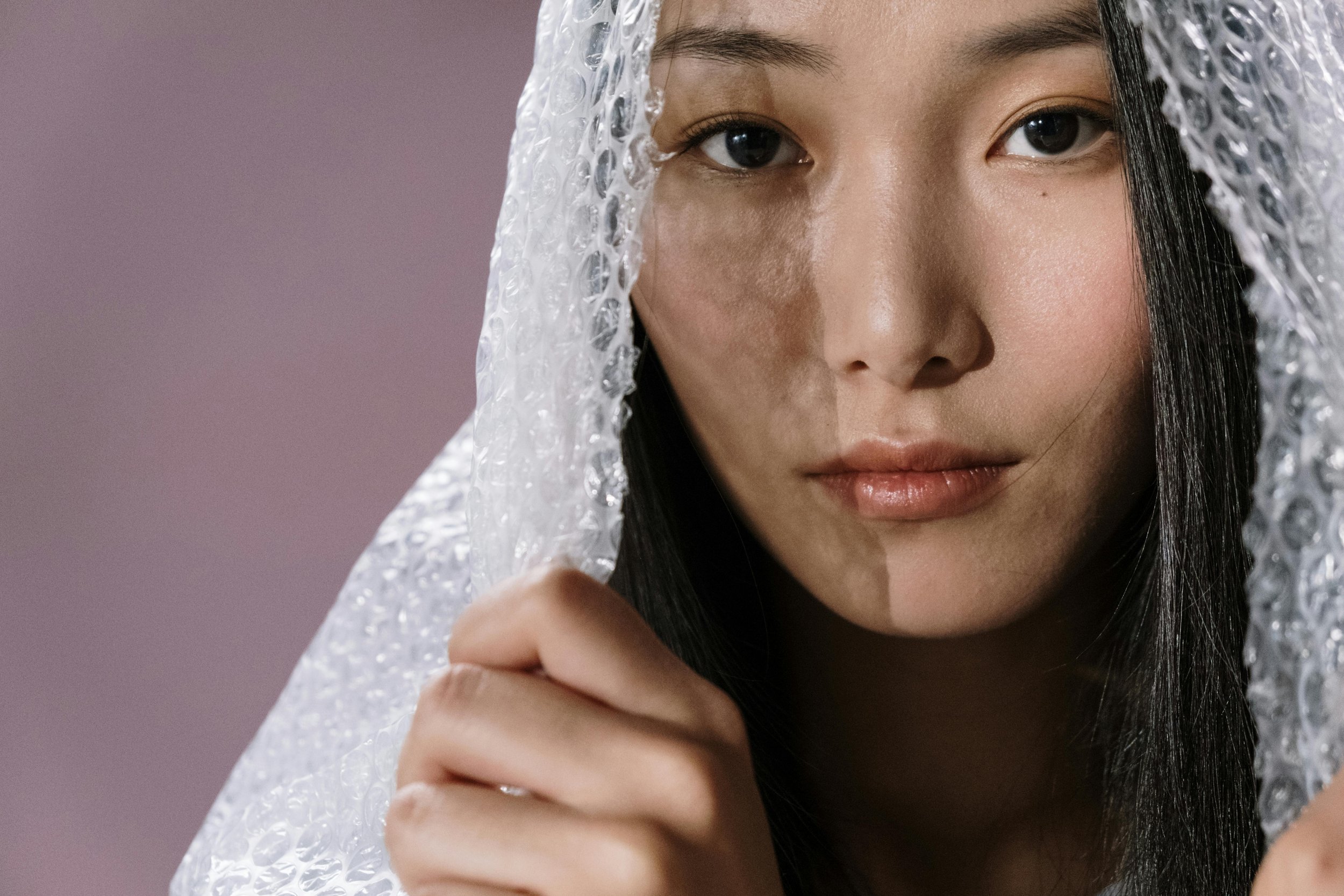Everything You Ever Wanted to Know About Retinoids
People rave about retinoids, but if you’re new to the world of skincare, you might not know exactly what they are. You might also have heard about bad experiences with the product, with people complaining of red or peeling skin. You might be confused about the differences between retinol, tretinoin, retinoic acid, and so on. And what do all those different percentages mean?
First of all, let me reassure you.
Retinoids are safe and very, very effective. And when used correctly, they can be transformative for your skin. But they are powerful, and need to be added into your skincare routine carefully and with guidance.
What can retinoids do?
Retinoids are often considered a “gold standard” in the treatment of skin rejuvenation due to their ability to increase the rate of cell turnover. This is based on over 40 years of research. They have been clinically proven to:
help diminish the appearance of fine lines and wrinkles
shrink the appearance of pore size
smooth out uneven skin tone and texture
diminish the signs of photo-ageing
The Skincare Science: Retinol has been shown to increase cellular mitosis, it stimulates collagen production, repairs the epidermis, and causes a healthy balance for appropriate melanin production. How does it accomplish all this?
First it normalises kerotinocyte differentiation and proliferation, thickening the epidermis. These cells are predominant in the epidermis of our skin and present in every layer (see our article on basic skin structure). It also reduces the plugging of sebaceous glands and sebum production, which can often otherwise lead to acne formation. It downregulates collagenases and matrix metalloproteinases, the enzymes which normally break down collagen. It also stimulates fibroblast production. It will increase the glycosaminoglycans, including hyaluronic acid, in your skin, plumping it up and moisturising it. It has anti-inflammatory and anti-oxidant activity and protects against free-radicals.
Sounds amazing, right? But - like everything - the biology of our skin is complicated so we need to know a bit more before we start slapping it on!
Vitamin A and the retinoid family
The retinoid family is a general term for analogues of the fat-soluble Vitamin A. Overall, Vitamin A plays a very important role in our vision, immune system, growth and reproduction. Deficiency often leads to issues like vision loss, hair loss, skin concerns, and increased infections. In our diets, we usually get Vitamin A from retinoid-rich animal sources or carotenoid-rich foods: liver, salmon, carrots, eggs, milk, cheese, sweet potatoes, and many others.
What are the different types of retinoids?
The Skincare Science: The retinoid family contains various different forms. All the various forms have the same biological features as Vitamin A. But the easy thing to remember is that retinoic acid is the only bioactive version of a retinoid, and therefore all other versions of this molecule have to undergo conversion to the active form in our bodies or skin.
A simplified version of this pathway is as follows: Retinol is converted to retinal (retinaldehyde) is converted to retinoic acid (tretinoin is all trans-retinoic acid) via oxidation.
Retinol is the most common form you will find a retinoid in for skincare products. It is very effective and stable, but must undergo the two-step oxidation process to get to its active form of retinoic acid.
Retinal is the oxidized for of retinol, and has been used in some skincare lines. However, studies have shown that it is not quite effective as retinol, although it can be better tolerated.
Tretinoin (trans-retinoic acid) is the most bioactive form of retinoid. It is a prescription medication.
The important thing to know is that retinoids work by attaching to retinoic acid receptors (RARs) and retinoid X receptors (RXRs) in the nucleus of our cells. Activation of these receptors leads to the expression of particular genes, which underlies the biology of how this molecule works.
Retinoids are not very soluble in body fluids, so they have to be bound to proteins to make it into the cell. In the epidermis, they will influence the formation of transcription of growth factors once they have attached to the appropriate receptors. This has the general effect of proliferating the living layer of cells in the epidermis, and creating a stronger and more watertight barrier.
What if I had a bad experience with retinoids?
Unfortunately this may be more common than it should be, but usually because we as practitioners have not done our job with patient education in explaining how to use retinoids, and what to expect.
A frequent side effect of retinoids is temporary skin irritation. A lot of people liken retinoids to an intense “training session” or “work-out” for your skin. In the same way when you first start going to the gym and you’re working hard, you expect to have some sore muscles as you build up your strength, health, and routine.
It’s also not uncommon to experience skin purging when starting your retinoids. Because retinoids increase cell skin turnover, if you have anything brewing underneath the surface of your skin it will bring it out faster. Remember, subclinical acne/microcomodones can be present under the skin for weeks before they appear. This doesn’t mean the retinoids are making acne worse - in fact they are doing exactly what we want them to!
However, that doesn’t mean that retinoids are absolutely perfect for everyone. If you have sensitive skin or are prone to conditions like eczema and psoriasis, it might not be the best fit. It is always best to consult with a medical professional who knows you and your history before incorporating it into your regimen. And if it doesn’t suit you? That’s fine! It’s not the end of the world as there are so many interesting, innovative and scientifically-backed anti-ageing products out there.
Who needs retinoids?
Experts seem to agree that starting retinoid use in our 30s (or even your mid-20s!) is good practice as preventative care. We begin losing our collagen in our 20s at a rate of 1% per year, and if we really want to get in there early to have the maximum impact on our skin in later years, this is the age range to start!
The changes that are occurring in your skin due to ageing start below the surface, and just because you cannot see it, doesn’t mean that the ageing process hasn’t begun!
How do I add it into my skincare routine?
The best thing to do is consult with your doctor or skincare specialist about this to find out what works best for you. The general rule-of-thumb is that you should ease in to give your skin a chance to get used to it. You can start by adding it into your routine just twice a week, then every other night, and then every day - tapering it up over the course of several weeks. Make sure that you moisturise well so that your skin isn’t dried out.
When you put on your retinol is important. Early studies showed that it can cause skin to be photo-sensitive, or be degraded in the sunlight, so most routines recommend that retinol is used as part of your nighttime routine. Although the idea that it will cause sunburn does not hold true for many of the sophisticated and newer formulations (like adapolene), it is always good practice to couple it with a very good SPF (which we should all be wearing all the time anyway!).
Not everyone agrees about retinoids
We’re going to shift gears now, and I’m going to tell you that not everyone is convinced about retinol being as great as some say. It is true that it is a very fashionable ingredient and has shown amazing results in the short-term, but some have concerns about its long-term effects on the skin.
One concern lies in exactly what makes it so good - the increased cell turnover. Your cell turnover is finite, and you could be pushing your skin too hard with retinol overuse. Although no long-term studies that I am aware of have ever brought any serious concerns about its use to light, some doctors would recommend taking breaks from retinoids. You can use it for 3 months, and then take a break for another 3 months.
I don’t bring this up to take away from the years of clinical research supporting retinoids’ use, but so that you have the full picture.
One other thing that I’ve seen is a molecule called bakuchiol being touted as a better alternative to retinoids (using buzzwords like “plant-derived” and the meaningless phrase “natural alternative” to Vitamin A). It is a promising and interesting molecule, and if it is an ingredient that incorporates well into your skin routine and gives good results then you should use it! However, it is deliberately misleading to compare it to retinoids. Although they might have somewhat similar mechanisms of action, there is nowhere near the same amount of evidence to show that it has the same efficacy as retinoids. Where it can be helpful is as an alternative to retinoids during pregnancy, when retinoids are contraindicated.
The bottom line
Retinoids can be a beautiful tool in the arsenal of a cosmetic doctor for reducing lines and wrinkles, signs of ageing, photo-damage, and evening your skin tone and texture. Prescription-strength retinoids can be excellent at targeting specific skin concerns like acne. It can make your skin glow, so don’t be intimidated at the idea of adding them into your routine. Your skin will likely benefit.
However, not everyone is sold on retinoids, and whether or not they are appropriate for you is down to an individual case-by-case examination. Do discuss with your skincare specialist before you start.
Final tips about retinoids
Packaging matters. Beware anything labelled as a retinoid in a see-through container or jar. Retinoids break down when exposed to air or light, so they should be in a sealed and opaque dispenser.
Add it to your nighttime routine. Because of sunlight exposure, it’s better to put it on right before bed. Sunlight can cause retinoid to be less potent by inactivating it. Although many dermatologists now agree that for most retinoids photo-sensitivty and risk of sunburn is no longer a serious issue, it still doesn’t hurt to make this an evening habit.
Start small. Only use a pea-sized amount twice a week, and taper up with advice and help from your skincare specialist.
Moisturise generously. Reduce the irritating side effects when you start retinoids by keeping your skin luxuriously hydrated while it gets used to the new routine.
There will be an adjustment period. Sometimes you have to let things get a little worse before they get better, and this is true of retinoids. While your skin can initially feel drier and redder, this will pass quickly. You may also suffer a breakout in acne-prone skin before it clears (Note: retinol does not cause acne. As it unclogs your pores and rejuvenates skin, acne that was already forming below the surface will be brought up more quickly so it can be cleared out!)
Be patient! Have realistic expectations and know you have to be slow and consistent and build it up in your routine before you see results. But if you stick it out, your skin will thank you! You will need to give it 3 to 6 months before you give up definitively.
It’s not for everyone. Retinoids are not always tolerated on sensitive skin. Even if you can tolerate it, if you already have clear skin without much evidence of ageing, you may be more comfortable with using other anti-ageing ingredients focusing on maintaining your skin health, moisture and skin barrier. And that is perfectly fine!
Do not use retinoids if you are pregnant or breastfeeding.


















When it comes to skincare, acids have long been the stars of the show—think glycolic, salicylic, and hyaluronic acids. These tried-and-tested ingredients have earned their reputation for addressing common skin concerns such as acne, wrinkles, and dryness.
But did you know there are lesser-known acids that are starting to make their mark in the skincare world? While some have been used for centuries, others are still emerging in research. In this blog, we’ll introduce you to some skincare acids you may have never heard of, discuss their potential benefits, and help you decide whether they should make their way into your routine.